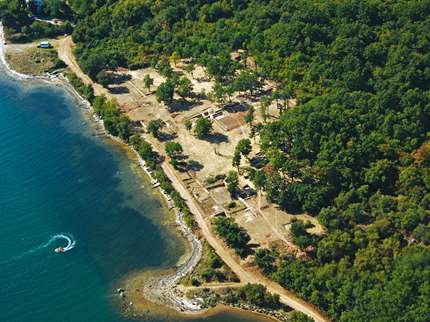Return
Lorun
Numerous remains of the Roman architecture were found on Lorun, ranging from the economic complex consisting of the ceramics workshop, the oil mill and the cistern to the residential part with the country villa.
Lorun is an Antiquity archaeological site located next to the planned built tourist resort of Červar Porta. The remains of a Roman country villa, an estate consisting of the ceramics workshop, an oil mill and a water cistern were found, while the oldest villa doors coincide with the year 46 BC, the time of the establishment of the Poreč colony under the Caesar. Sisenna Statilie Tauro, a Roman consul for as many as 16 years, owned the estate in the 1st century AD. He was the one who had probably invested in the construction of the economic facilities. Sisienna was an influential man of the time and one of the largest estate owners on the Istrian peninsula. After he had died, the estate first fell under the governance of Kalvia Krispilina, a woman known for her numerous scandals on the court of Neron, and then became a part of the Emperor's agricultural good covering the entire area of Tar and Vabriga. The names of both these previous owners were confirmed by numerous amphora remains bearing their seals. The Červar villa was greatly expanded during Emperor Tiberius, when the Poreč area and the Červar field became a part of a large agricultural complex for growing and processing olives and grapes. The ceramics workshop, which ovens are the best explored on the Adriatic, closed down in the end of the 1st century. The oil mill might have been operational until the barbarians and the Slavs broke in. They used one of its parts as an oven. The site today is an archaeological park with panels, explanations and photographs of explored facilities, from ceramic ovens to the cistern.






